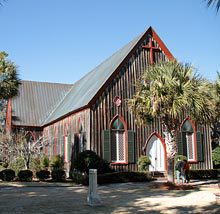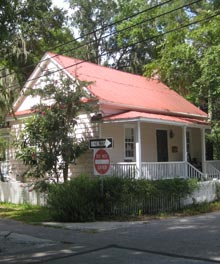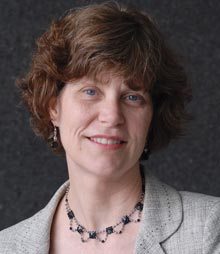
“119. For the temple of the principal church, parish, or monastery, there shall be assigned specific lots; the first after the streets and plazas have been laid out, and these shall be a complete block so as to avoid having other buildings nearby, unless it were for practical or ornamental reasons.” – The Law of the Indies, 1573 by order of King Phillip II of Spain
From our earliest beginnings as a country, we have always reserved the most important and prominent spaces for our civic buildings. The Law of the Indies, as the first specific set of rules governing the settlement of a new town in the new world by Spanish colonists, decreed that there were to be three things that should happen before any other: the identification of the highest and best location for the main plaza; the establishment of streets that were to radiate out from the plaza in ordinal directions; and the reservation of the first lots for the establishment of churches (or more specifically – the Catholic Church). Numerous towns in the southeast and southwest United States were established according to these principles, including Santa Fe, NM, Fernandina, FL, Albuquerque, NM, and Tuscon, AZ. Beaufort and Bluffton, as well, have a rich heritage of churches embedded into their urban fabric.
This practice of regarding the primacy of public spaces and buildings of a city continued throughout much of the early years in American urban development. The New England town square was the puritanical form of the Spanish plaza and was often flanked by a protestant church. Cathedrals continued to be constructed in prime locations with views from the waterfronts to greet arriving visitors or on hilltops so as to be seen by the entire village or city. In urban neighborhoods throughout the country, churches were constructed to serve the various ethnic immigrant populations that would settle in particular area, becoming their spiritual, social and educational (through parochial schools) anchors. Together with other parks or plazas, churches formed the essential public realm of many a neighborhood throughout the county.
The church’s slide from architectural pre-eminence in neighborhoods and in cities occurred over a long period. Rather than a single cause, it is more likely that a series of gradual shifts, primarily demographic and economic, slowly aggregated to conspire against what was once the norm. These shifts also impacted the construction of other public buildings as well.
The last consideration of the importance of the public realm came during the City Beautiful movement of the late 19th and early 20th centuries (and the garden City movement occurring in parallel in Great Britain). Advocates sought to clean up many of the country’s larger cities through the imposition of beautiful landscapes and monuments. While important as a design philosophy, its moral and social goals lacked any spiritual component. As a result, few churches were incorporated into plans, finally ceding their long-standing role as important neighborhood anchors to more egalitarian structures such as museums, libraries, and government buildings.
of the late 19th and early 20th centuries (and the garden City movement occurring in parallel in Great Britain). Advocates sought to clean up many of the country’s larger cities through the imposition of beautiful landscapes and monuments. While important as a design philosophy, its moral and social goals lacked any spiritual component. As a result, few churches were incorporated into plans, finally ceding their long-standing role as important neighborhood anchors to more egalitarian structures such as museums, libraries, and government buildings.
The final death knell was rung after the end of World War II with the explosion of the suburban development pattern and its focus on efficiency and privacy. Public space and public buildings were no longer a component of the development pattern and were left to compete for land that was largely left over once private development had consumed it. Because our suburbs, as the predominate development pattern across the US (and which we have exported worldwide) have sprawled in this low-density, auto-dependent landform, our civic facilities have been forced to build bigger and further away as a means to attract more students, parishioners, or congregants.
Yet, while churches are closing in some locations, they continue to grow in others. But unlike their urban, in-town counterparts, these campuses must accommodate exceptionally large facilities, classroom and office buildings, and occasionally schools. Perhaps, most important, these large sites must accommodate the fact that every single person who attends will arrive by automobile, a fact that ensures that a large percentage of every capital dollar must be relegated to the construction of a parking lot rather than on the architecture of its building or the ministries that they provide.
New Urbanists have long asserted the need to reserve prominent locations within new neighborhoods for the erection of various civic buildings – town halls, fire stations, school, museums, and churches. The challenge until now has been for many to figure out a means by which the vertical infrastructure of the civic building can once again be integrated into the neighborhood after more than a half-century of moving away from it. Will congregations sacrifice the expansive greenfield campus with generous parking lots for a more urban location? And perhaps more importantly, can the re-insertion of the neighborhood church be more than a programmatic alternative to the community clubhouse and truly fulfill the spiritual needs of the neighborhood’s residents?
In fact a number of congregations and faith communities have ventured back into the neighborhoods, both old and new. Counted among a growing number of new neighborhood-friendly religious communities are St. Charles Christian Church in the New Town at St. Charles, MO, Holy Ascension Russian Orthodox Church in I’On in Mt. Pleasant, SC, St. Alban’s Episcopal Church in Davidson, NC and the Episcopal Church of the Good Shepherd in Covington, GA.
What New Urbanism presents to the church is an opportunity. Very simply, it is an opportunity to discontinue replicating the pattern of auto-dependent, sprawling campuses in the greenfields in favor of returning to the neighborhoods to once again become important social and spiritual anchors. In doing so, the neighborhood church provides visual beauty, physical prominence, and the restoration of authentic urbanism with a physical return of the sacred and the spiritual to our daily lives. Most importantly, the neighborhood church can begin to once again fulfill its role in proclaiming the word of God within walking distance of our front porch.
For more about this topic, please visit http://www.sacredarchitecture.org/articles/authentic_urbanism_and_the_neighborhood_church/
Craig Lewis is the Managing Principal of the Carolinas office of Lawrence Group, a town planning, architecture, and landscape architecture firm an a Co-Director of the Office of Civic Investment for the City of Beaufort, SC.








